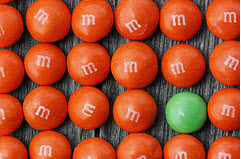Food Dyes May Exacerbate Hyperactive Behavior In Some Kids
It has long been suspected that kids with ADHD might be having some sort of reaction to common synthetic food dyes — but now the FDA is going to formally consider any links between the dyes and hyperactivity in children, including over 30 different studies on the topic.
Last July, a European Union regulation went into effect requiring that food containing six of the dyes state on the label that they “may have an adverse effect on activity and attention in children.”
The eight dyes — used to give bright colors to beverages and candy, make food more appealing, but don’t serve any other purpose. Dr. L. Eugene Arnold, a child psychiatrist specializing in ADHD and autism, and a professor emeritus at Ohio State University, will be testifying at the hearing and spoke to ABCNews:
“If something is safe, easy, cheap and sensible to do, you don’t need as much evidence to take action. In this case, the action would be to remove artificial food dyes from foods targeted to kids.”
“Dyes are not an essential food group,” he said. “We have an obesity epidemic; it’s not necessary to make food more attractive. The sole purpose of the dyes is to make food more attractive.”
Unlike preservatives, which keep food from spoiling, “there’s certainly no risk to taking it away. Until we have better research to really tease out what’s going on here, it would really make sense to really stay away from the artificial food dyes.”
Meanwhile, the International Food Information Council, a non-profit supported by the food and beverage industry, denies that there is sufficient evidence to link food dyes to hyperactive behavior in kids with ADHD.
“The conclusion of many scientists and academic experts who have studied artificial food colors in great detail is that artificial food colors are safe for use in foods and beverages and do not introduce adverse effects, including behavioral effects,” said the organization in its written comments to the FDA.
“Artificial food colors are very familiar ingredients to the average consumer, and according to current FDA regulations, artificial food colors (or certified color additives) must be listed in the ingredients list of the product label. As such, consumers wishing to avoid artificial food colors may do so easily by reading the label.”
Food Dyes May Exacerbate Hyperactivity in Sensitive Children [ABCNews]
Written Comments submitted to FDA on food colors and hyperactivity (March 23, 2011) (PDF) [FoodInsight.org]
Center for Science in the Public Interest (CSPI) Petition (PDF – 4043KB) [FDA]
Want more consumer news? Visit our parent organization, Consumer Reports, for the latest on scams, recalls, and other consumer issues.


